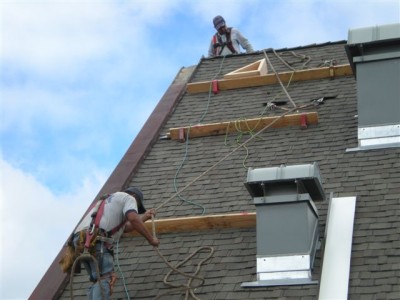If you’re a contractor who’s ever worked on an older home, chances are you’re familiar with laws regarding fall protection and safety. What you may not know is that fall protection laws are changing.

From OSHA’s most recent newsletter:
Fall Standards are changing starting January 1st, 2017. This is a major change. OSHA is lowering the current 10-foot general fall protection height to six feet.
In the current regulations, contractors don’t need to have dedicated fall protection for heights 10 feet or below. However starting in 2017, this is changing to 6 feet. Contractors should be quick to address this with their employees and begin proper education to avoid injuries and fines.
They are also prohibiting the use of slide guards as a primary fall protection system starting October 1st, 2017.
Join us in the National Safety Stand Down, May 2nd-6th, 2016.
More than 1/3rd of construction related deaths were from falls by elevation in 2015. We’re teaming with OSHA to raise awareness of this dangerous risk to contractors and educate all who are ready to learn about proper safety procedures. Remembers, Falls Cost, but Safety Pays.







